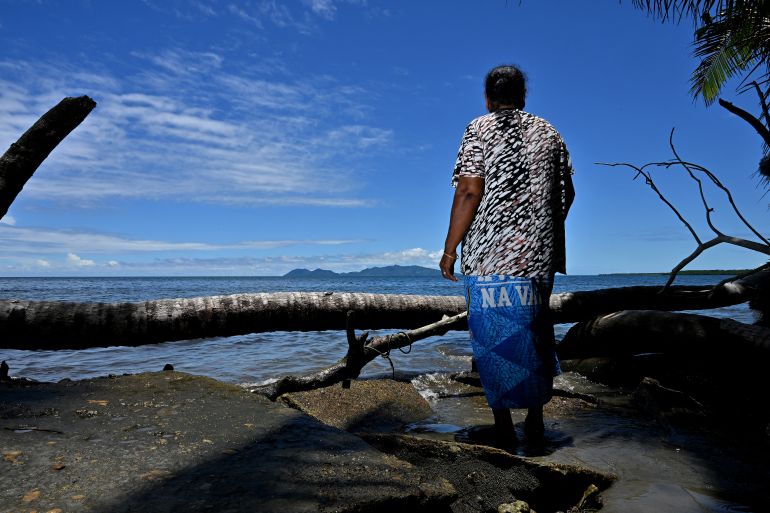UN chief issues climate SOS, warns of ‘unimaginable’ catastrophe
Speaking at a meeting of Pacific Island leaders in Tonga, Antonio Guterres warned the region was ‘uniquely exposed’.
Pacific island nations such as Fiji have been badly affected by erosion [File: Saeed Khan/AFP]Published On 27 Aug 202427 Aug 2024
United Nations Secretary-General Antonio Guterres has issued his latest climate SOS, calling on countries to “Save Our Seas” as he warned of a crisis of an “unimaginable scale” caused by greenhouse gases and rising sea levels.
Speaking at a gathering of Pacific Island regional leaders on Tuesday in Tonga’s capital Nuku’alofa, he warned there was “no lifeboat to take us back to safety”.
Keep reading
list of 3 itemsend of list
“This is a crazy situation: Rising seas are a crisis entirely of humanity’s making. A crisis that will soon swell to an almost unimaginable scale,” he said. “The reason is clear: Greenhouse gases – overwhelmingly generated by burning fossil fuels – are cooking our planet. And the sea is taking the heat – literally.”
Nuku’alofa is hosting more than 1,000 international delegates for the Pacific Islands Forum Leaders Meeting until August 30. Climate change and its impact on the Pacific’s low-lying communities is high on the agenda at the gathering of regional officials, who lead some of the world’s most imperilled countries.
Guterres, who last attended the Leaders Meeting in 2019, warned that with about 90 percent of people living within 5km (3 miles) of the coast, and an average elevation of just one to 1-2 metres (3.2-6.5 ft) above sea level, the “Pacific islands are uniquely exposed”.
He is also expected to visit Samoa while he is in the Pacific.
“Without drastic cuts to emissions, the Pacific Islands can expect at least 15 centimetres [6 inches] of additional sea level rise by mid-century, and more than 30 days per year of coastal flooding in some places,” he said. “But if we save the Pacific, we also save ourselves. The world must act and answer the SOS before it is too late.”
Guterres is in Tonga and will also visit Samoa on his trip to the Pacific islands [Ben McKay/EPA]
Among the Pacific Islands’ most ambitious climate change mitigation efforts is the Pacific Resilience Facility. The “Pacific-owned and led” financial institution, which will support local communities to become more resilient to climate change, is scheduled to start operations in 2025 but is facing a severe shortfall in funding from international donors.
Guterres repeated his longstanding appeal to “the biggest emitters”, the Group of 20 (G20) nations, to financially support the world’s most climate-vulnerable countries.
“We need a surge in funds to deal with surging seas,” he said.
Guterres’s comments came as two UN agencies published stark reports warning of worsening sea level rises on Monday. A World Meteorological Organization report on rising sea levels in the Pacific and a UN Climate Action Team report on surging seas in a warming world both “throw the situation into sharp relief”, Guterres said.
The Climate Action Team report found that sea levels in Nuku’alofa had risen 21 centimetres (8.3 inches) between 1990 and 2020, more than twice the global average of 10 centimetres (3.9 inches).
“Today’s reports confirm that relative sea levels in the Southwestern Pacific have risen even more than the global average – in some locations, by more than double the global increase in the past 30 years,” Guterres said.
The UN General Assembly is set to hold a special session to discuss the existential threat posed by rising sea levels on September 25.
